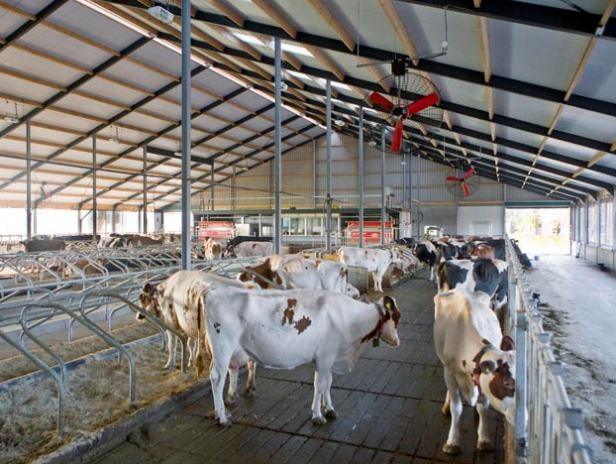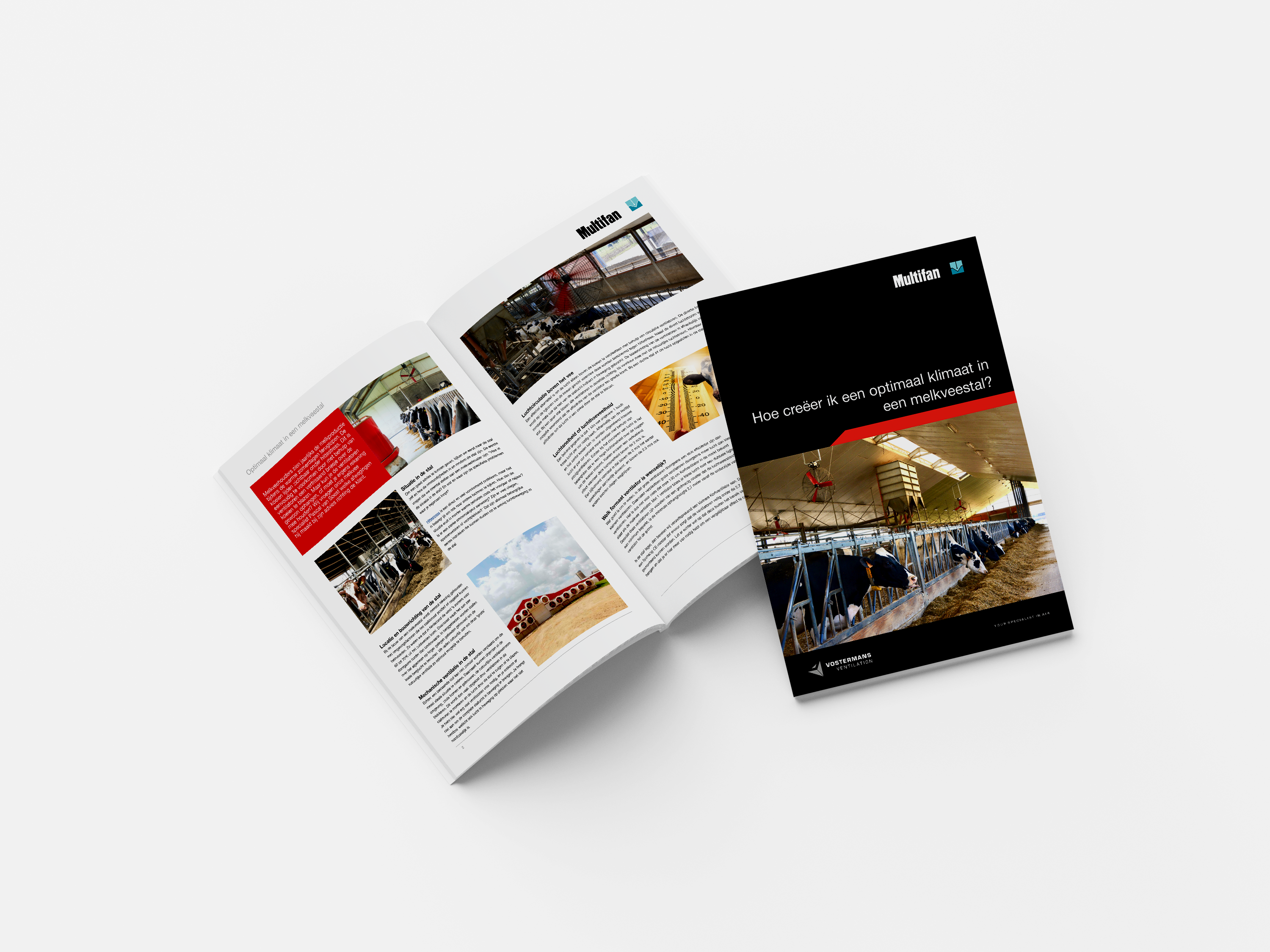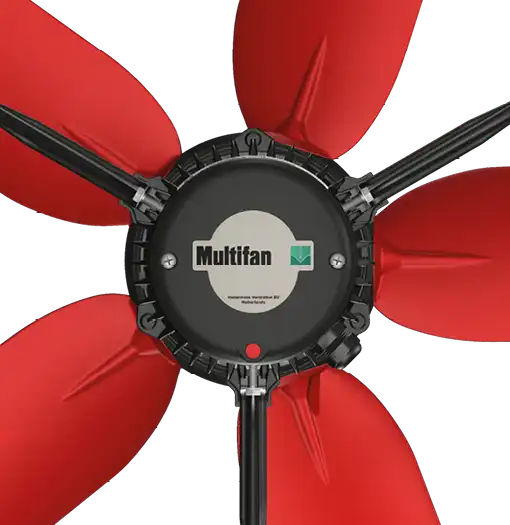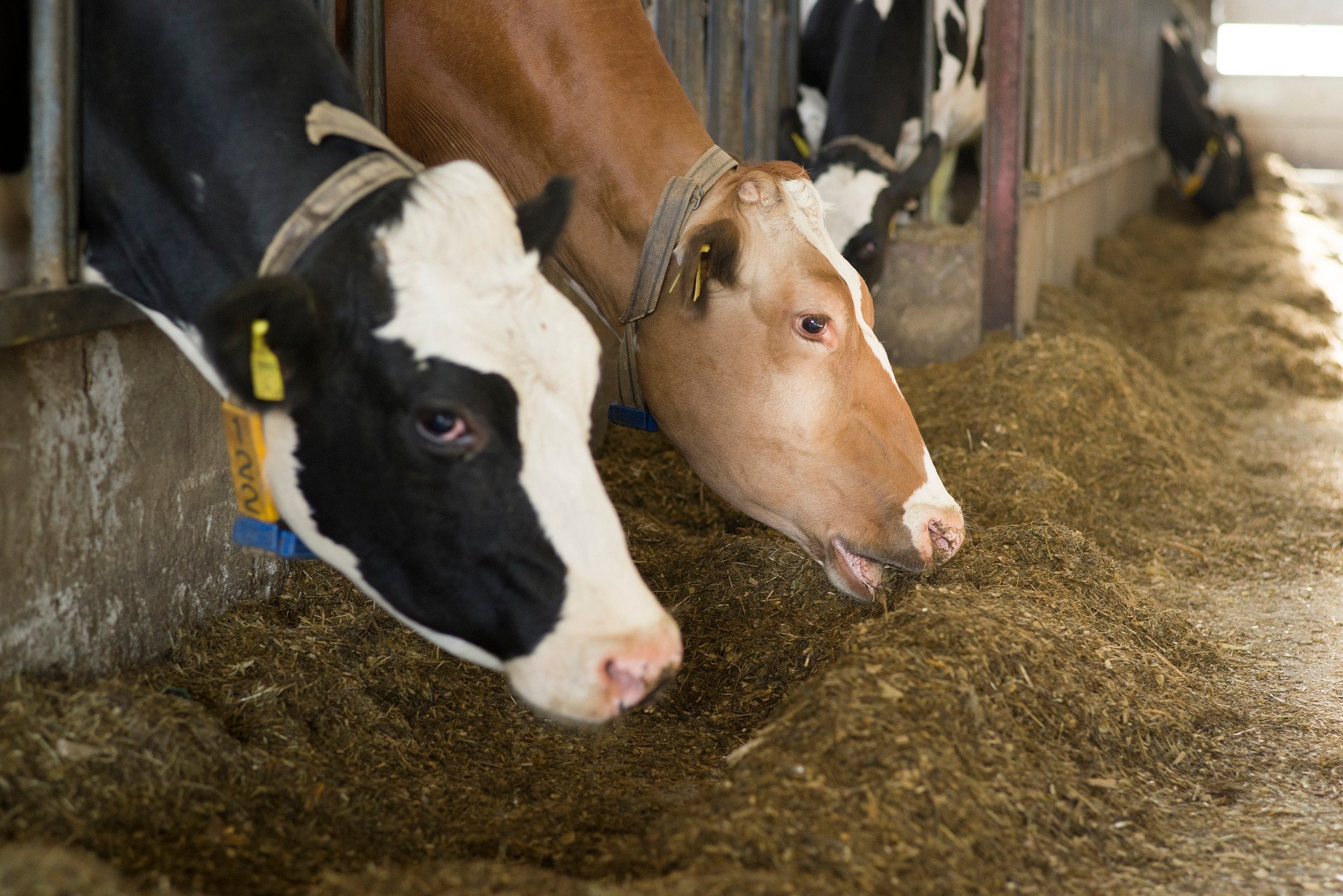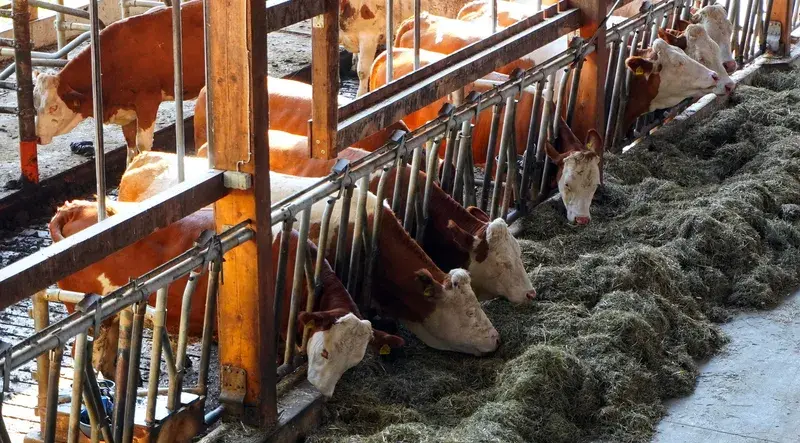When the decision to acquire new fans has been made, the next question is often: How many fans do I need to achieve the desired result. While this depends heavily on the application, some general assumptions can be made for the use in dairy barns. The ideal number of fans partly depend on a set of installation choices, which you can read more about in our other blog “Where to mount fans in dairy barns”. In this article we mention a few other factors that influence the amount of fans you will need.
Air speed and air volume
When circulating air, it is important that a specific air speed can be reached and maintained. Cows experience a cooling effect when the air speed is above 2 meters per second. An additional advantage is that air above that speed also significantly reduces gadflies. Above an air speed of 2.5 meters per second, also other types of flies are kept away.
Area of effect and efficiency
When we look beyond all other influences and purely look at the fans themselves, we see that our 130 cm basket fan can provide an air speed of 2 meters per second across a reach of around 15 meters. By mounting another fan after 15 meters, the moving air is sucked in again and blown through to another potential fan. This does not only improve the area of effect of the fan but also increases its efficiency.
So how do I calculate how many fans I need for a barn?
The number of fans you need is strongly dependent on the elements mentioned earlier. When we purely look at the fans themselves, we see that our 130 cm basket fan can provide an air speed of 2 meters per second across a reach of around 15 meters. By mounting another fan after 15 meters, the moving air is sucked in again and blown through to the next fan. This does not only improve the area of effect of the fan but also increases its efficiency.
It is probably easier to explain this matter with a calculation. 1 m3 of air usually weights around 1.2 kilograms. Multiplying this by 40.100 m3 of air per hour (data 130cm dairy fan) means that 1 fan should move around 48.000 kilos of air per hour. To keep 48.000 kilograms of moving air in motion naturally requires less energy than to bring it in motion repeatedly
For a full copy of our dairy barn ventilation knowledge articles, have a look at our downloadable white paper covering the installation of fans in dairy barns, speed controllers and other related topics that will help you create an optimal barn climate.
